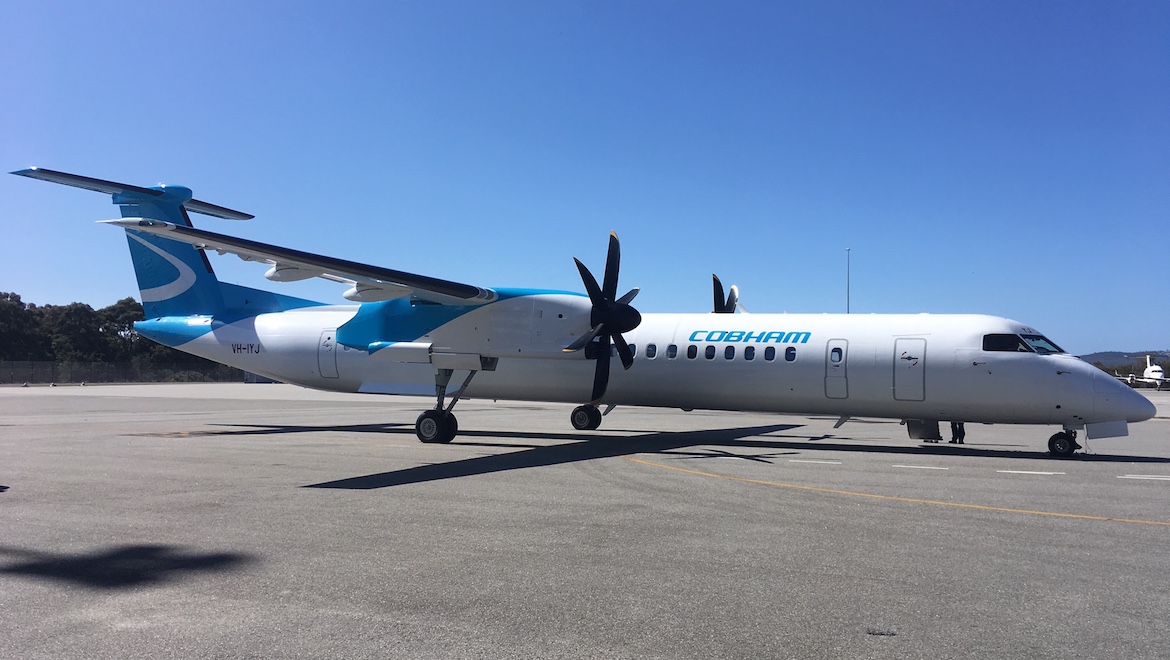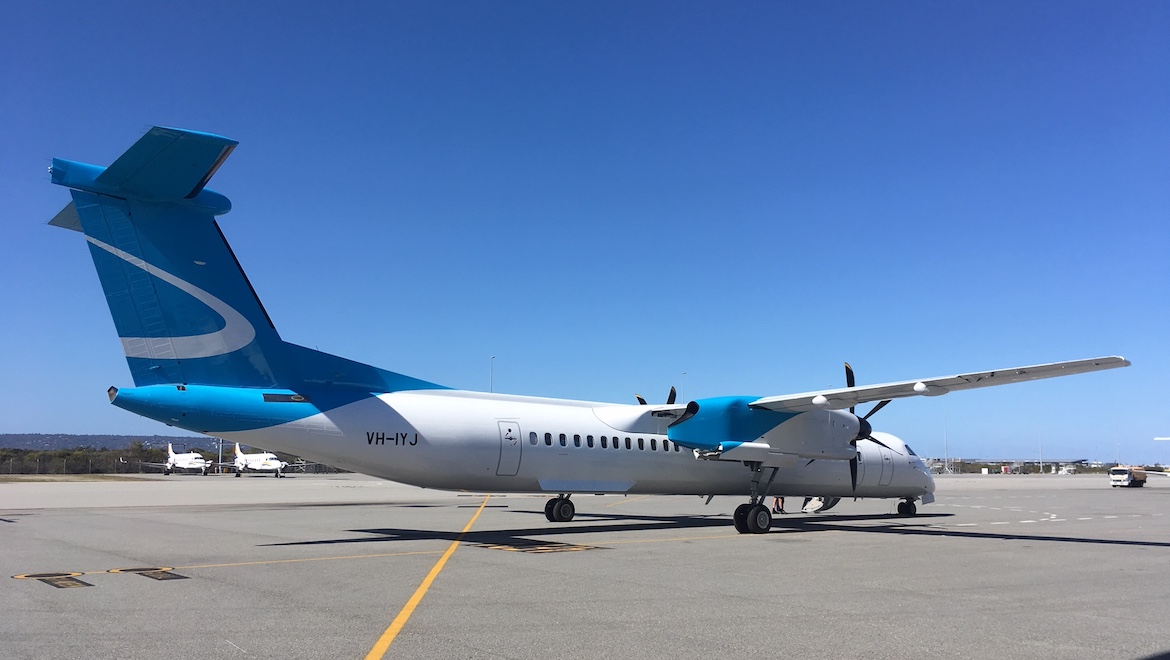
Cobham Aviation Services chief executive Ryan Both says the company’s first de Havilland Q400 turboprop represents a growth platform for the future.
The Q400, registration VH-IYJ, was officially unveiled at Perth Airport on Monday, with Cobham’s customers, other invited guests and reporters treated to a 55-minute demonstration flight on the aircraft that took in views of Rottnest Island, Mandurah and the West Australian coast.
A second Q400 was expected arrive in about a month.
Another look at #Cobham’s first #Q400 VH-IYJ after the aircraft was rolled out of the hangar at #Perth Airport with #VirginAustralia #Airbus A330-200 VH-XFJ flying overhead #avgeek pic.twitter.com/Uo1PjPXbQO
— World of Aviation (@the_wofa) August 19, 2019
The ex-airBerlin Q400, which rolled off the production line in 2016, joins Cobham’s fleet of 10 RJ/BAE 146, one Embraer E190, four BAE146 freighters and three Dash 8-100s.
Both said it was an exciting day for the company.
“When you fly airplanes for a living it is always a good day when you get a new one,” Both said on Monday.
“This is a story about growth. For us, we want the Q400 to be the growth platform.
Both said the fly-in/fly-out sector was recovering, noting the increased activity in the mining and resources sector in recent times.
“We are seeing all the signs that the industry is beginning to accelerate again which is fantastic.”

While Monday represented the offical unveiling of VH-IYJ, the aircraft commenced commercial service earlier in August. During that time, Cobham became the first and only airline to operate the Q400 on unpaved runways in Australia.
While Cobham evaluated a number of different aircraft for its future fleet needs, Both said the Q400 had a couple of key advantages over its similarly-sized rival the ATR 72-600.
“It has more fuel capacity, which means you pick up less fuel at the outport, which is really important when you are in a remote part of Western Australia in particular,” Both said.
“The logistics supply chain to get fuel out to site is very complicated and very carbon intensive so minimising fuel uplift at outports was an important consideration.”
“The other thing is it has an auxiliary power unit so it means we can keep the cabin cool when we are on the ground on a turnaround.
“Both of those things are not the case with the ATR.”
Further, Both said the Q400 had 20-30 per cent lower carbon emissions that the RJ/BAe 146 and offered significantly lower fuel burn.
Cobham Aviation Services, the largest airline group in Australia after Qantas and Virgin Australia, has charter and fly-in/fly-out operations serving Australia’s resources sector, does aerial border surveillance and search-and-rescue operations, as well as freight services and contract flying on behalf of other carriers.
It is part of United Kingdom-based Cobham plc.
In July, Cobham plc announced it had received a takeover offer from global private equity company Advent International and flagged a “strategic review” of its Australian operations.
This process would enable the company to decide “how best to optimise the value” of the Australian arm, Cobham Plc chief executive David Lockwood said.
Asked about the progress of the strategic review on Monday, Both said the process was “well advanced”, with announcement expected by the end of calendar 2019.
“There has been a lot of interest and potential buyers of the business,” Both said.
VIDEO: A look at the arrival of Cobham Aviation Services’ first Dde Havilland Q400 turboprop in Perth. (Video courtesy Cobham).










